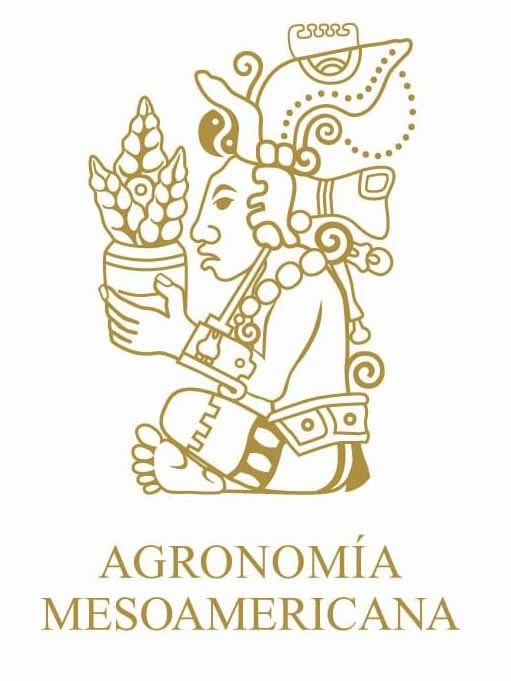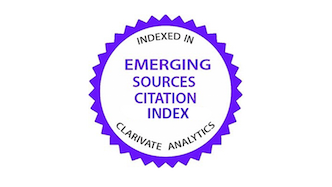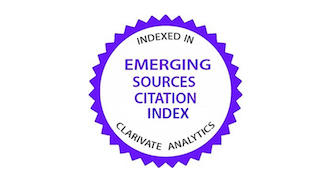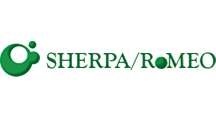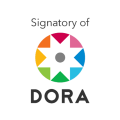Eficacia del aceite esencial de ruda (Ruta graveolens) y ácido oxálico en el control de varroasis
DOI:
https://doi.org/10.15517/p60x4x94Keywords:
bees, mites, essential oils, effectiveness, sustainable managementAbstract
Introduction. Varroa destructor is one of the main causes of mortality in Apis mellifera colonies, thus requiring constant control measures are required. Objective. To evaluate the efficacy of using rue oil and oxalic acid to control V. destructor in honeybees (Apis mellifera). Material and methods. The study was conducted in commercial honeybee hives located in two areas of the city of Ambato, Tungurahua, Ecuador, from April to May 2023. Oxalic acid (5 and 10 g) and rue oil (10 and 15 %) were applied by sublimation or impregnated strips, respectively, and a control treatment (without applications) was used. Three applications of each treatment were made at eight-day intervals. at 96 h after application. A completely randomized design was used. Results. The highest mite mortality was obtained increasing the oxalic acid with dosage and exposure time. Oxalic acid (5 and 10 g) reduced Varroa infestation by 92.3 and 84.9 %, while rue essential oil at 10 and 15 % caused 68.0 and 76.5 % of mortality, respectively. Concomitantly, control efficiency increased over time, being significantly higher in hives treated with sublimed oxalic acid. Conclusion. Due to the effectiveness of oxalic acid and rue essential oil in controlling varroosis, and their safety for bees, they may be an alternative to be included in an integrated management program for V. destructor in beekeeping.
References
Alsaadi, M., Keshlaf, M. M., & Mirwan, H. B. (2024). Some essential oils as potential control agents for varroa mite (Varroa destructor) in infected honey bees (Apis mellifera). Open Veterinary Journal, 14(2), 692–698. https://doi.org/10.5455/OVJ.2024.v14.i2.9
Bruckner, S., Wilson, M., Aurell, D., Rennich, K., vanEngelsdorp, D., Steinhauer, N., & Williams, G. R. (2023). A national survey of managed honey bee colony losses in the USA: results from the Bee Informed Partnership for 2017–18, 2018–19, and 2019–20. Journal of Apicultural Research, 62, 429–443. https://doi.org/10.1080/00218839.2022.2158586
Bubnič, J., Prešern, J., Pietropaoli, M., Cersini, A., Moškrič, A., Formato, G., Manara, V., & Smodiš Škerl, M. I. (2024). Integrated Pest Management strategies to control varroa mites and their effect on viral loads in honey bee colonies. Insects, 15, Article 115. https://doi.org/10.3390/insects15020115
De Jong, D., Morse, R. A., & Eickwort, G. C. (1982). Mite pests of honey bees. Annual Review of Entomology, 27(1), 229–252. https://doi.org/10.1146/annurev.en.27.010182.001305
Diawati, C., Liliasari, Setiabudi, A., & Buchari (2017). Students’ construction of a simple steam distillation apparatus and development of creative thinking skills: a project-based learning. AIP Conference Proceedings, 1848(1), Article 030002 https://doi.org/10.1063/1.4983934
Doublet, V., Oddie, M. A. Y., Mondet, F., Forsgren, E., Dahle, B., Furuseth-Hansen, E., Williams, G. R., De Smet, L., Natsopoulou, M. E., Murray, T. E., Semberg, E., Yañez, O., De Graaf, D. C., Le Conte, Y., Neumann, P., Rimstad, E., Paxton, R. J., & De Miranda, J. R. (2024). Shift in virus composition in honeybees (Apis mellifera) following worldwide invasion by the parasitic mite and virus vector Varroa destructor. Royal Society Open Science, 11(1), Article 231529. https://doi.org/10.1098/rsos.231529
Eguaras, M., Alejandra, M., Faverin, C., Basualdo, M., Luis, M., Hoyo, D., Velis, G., & Bedascarrasbure, E. (2003). Efficacy of formic acid in gel for Varroa control in Apis mellifera L.: Importance of the dispenser position inside the hive. Veterinary Parasitology, 111, 241–245. https://doi.org/10.1016/S0304-4017(02)00377-1
Frazier, M., Muli, E., & Patch, H. (2024). Ecology and management of African honey bees (Apis mellifera L.). Annual Review of Entomology, 69, 439–453. https://doi.org/10.1146/annurev-ento-020823-095359
Gray, A., Adjlane, N., Arab, A., Ballis, A., Brusbardis, V., Douglas, A. B., Cadahía, L., Charrièreh, J.-D., Chlebo, R., Coffey, M. F., Cornelissen, B., da Costa, C. A., Danneels, E., Danihlík, J., Dobrescu, C., Evans, G., Fedoriak, M., Forsythe, I., … Brodschneider, R. (2023). Honey bee colony in rates in 37 countries using the COLOSS survey for inter 2019–2020: the combined effects of operation size, migration and queen replacement. Journal of Apicultural Research, 62, 204–210. https://doi.org/10.1080/00218839.2022.2113329
Jobart, B., Delatte, H., Lebreton, G., Cazanove, N., Esnault, O., Clémencet, J., & Blot, N. (2024). Parasite and virus dynamics in the honeybee Apis mellifera unicolor on a tropical island recently invaded by Varroa destructor. Journal of Invertebrate Pathology, 204, Article 108125. https://doi.org/10.1016/j.jip.2024.108125
Jumbo, N., Fernández, P., Sisalima, R., & Balcázar, M. (2019). Elaboración de un acaricida natural a base de aceite esencial de Ruta graveolens para el control de varroasis (Varroa jocobsoni Oudemans) en abejas (Apis mellifera). Revista del Colegio de Médicos Veterinario del Estado Lara, 17, 37–41. https://dialnet.unirioja.es/servlet/articulo?codigo=7781990
Kebebe D., Gela, A., Damto, T., Gemeda, M., & Leggese, G. (2022). Evaluating the effect of plants extracts against varroa mites (Varroa destructor) of honeybees (Apis mellifera). Chemistry and Materials Research, 14(2), 26-30. https://doi.org/10.7176/CMR/14-2-03
Kosch, Y., Mülling, C., & Emmerich, I. (2024). Resistance of Varroa destructor against oxalic acid treatment - A systematic review. Veterinary Sciences, 11(9), Article393. https://doi.org/10.3390/vetsci11090393
Koumad, I. I., & Berkani, J. O. (2019) Assessment of the efficacy of four medicinal plants as fumigants against Varroa destructor in Algeria. Archivos de Zootecnia, 68(262), 284-292. https://doi.org/10.21071/az.v68i262.4148
Masaquiza, D., Martin, D., Zapata, J., Soldado, G., & Salas, D. (2023). Apicultura ecuatoriana: situación y perspectiva. Tesla Revista Científica, 3(2), Article e252. https://doi.org/10.55204/trc.v3i2.e252
Masaquiza, D., Miguel, L., Rodríguez, C., & Arenal, A. (2020). Africanización de la abeja melífera (Apis mellifera L.). Revisión de Literatura. Agrisost, 26(2), 1–13.
Medina-Flores, C. A., Macías-Macías, J. O., Rodríguez-Cárdenas, A., Saucedo-Rivera, A., Camacho-Vásquez, H., Carrillo-Muro, O., & López-Carlos, M. A. (2021). Pérdida de colonias de abejas melı́feras y factores asociados en el centro-occidente de México en los inviernos del 2016 al 2019. Revista BioCiencias, 8, Article e1095. https://doi.org/10.15741/revbio.08.e1095
Meixner, M. D., Pinto, M. A., Bouga, M., Kryger, P., Ivanova, E., & Fuchs, S. (2013). Standard methods for characterising subspecies and ecotypes of Apis mellifera. Journal of Apicultural Research, 52(4), 1-27. https://doi.org/10.3896/IBRA.1.52.4.05
Minaya Mateo, I. D., & Pérez González, I. (2022) Eficacia de tres formulaciones artesanales a base de ácido oxálico para el control de Varroa destructor en Apis mellifera, en ambiente de Bosque Húmedo. [Tesis de grado, Universidad Nacional Pedro Henríquez Ureña]. Repositorio Institucional RI-UNPHU. https://repositorio.unphu.edu.do/handle/123456789/4333
Mitton, G. A., Meroi Arcerito, F., Cooley, H., Fernández de Landa, G., Eguaras, M. J., Ruffinengo, S. R., & Maggi, M. D. (2022). More than sixty years living with Varroa destructor: a review of acaricide resistance. International Journal of Pest Management, 1-18. https://doi.org/10.1080/09670874.2022.2094489
Moyano Morocho, J. P. (2021) Eficacia del ácido oxálico mediante tres vías de administración para el control de Varroosis en abejas (Apis mellifera). [Tesis de grado, Universidad Central del Ecuador]. Repositorio Institucional Universidad Central del Ecuador. https://www.dspace.uce.edu.ec/entities/publication/adf7caf7-5cfc-4cf9-9015-821c522e909c
Parker, R., Melathopoulos, A. P., White, R., Pernal, S. F., Guarna, M. M., & Foster, L. J. (2010). Ecological adaptation of diverse honey bee (Apis mellifera) populations. PLoS ONE, 5(6), Article e11096. https://doi.org/10.1371/journal.pone.0011096
Polo Corro, J. L., Alvarado Ibañez, J. C., & Valderrama Alfaro, S. M. (2022). Determinación del índice de infestación por Varroa destructor en colonias de Apis mellifera, en condiciones naturales. Ambiente, Comportamiento y Sociedad, 5(1), 55–68. https://doi.org/10.51343/racs.v5i1.799
Rademacher, E., & Harz, M. (2006). Oxalic acid for the control of varroosis in honey bee colonies - a review. Apidologie, 37, 98–120. https://doi.org/10.1051/apido:2005063
Ramsey, S. D., Ochoa, R., Bauchan, G., Gulbronson, C., Mowery, J. D., Cohen, A., Lim, D., Joklik, J., Cicero, J. M., Ellis, J. D., Hawthorne, D., & Van Engelsdorp, D. (2019). Varroa destructor feeds primarily on honey bee fat body tissue and not hemolymph. Proceedings of the National Academy of Sciences, 116(5), 1792–1801. https://doi.org/10.1073/pnas.1818371116
Tabafunda, M. J., De Castro, D. T., Pajarillo, M. C., Soliba, M. P., Garcia, A. A., Acosta, D. C., & Dangle, E. O. (2023). Efficacy of plant extracts against Varroa mites (Varroa destructor) of honey bees (Apis mellifera L.). Journal of Biodiversity and Environmental Sciences, 23(5), 38–50. https://innspub.net/download/?target=wp-content/uploads/2024/01/JBES-V23-No5-p38-50.pdf_38616
Whitehouse, M., Rangel, J., Yousuf, F., Sainsbury, J., & Goodwin, M. (2025). Innovations in Varroa mite management. Current Opinion in Insect Science, 68, Article 101343. https://doi.org/10.1016/j.cois.2025.101343
Downloads
Published
License
Copyright (c) 2025 Patricio Núñez, Jennifer Lozada, Roberto Almeida, Carlos Vásquez, Ricardo Guerrero, Paulina Amaluisa Rendón (Autor/a)

This work is licensed under a Creative Commons Attribution-NonCommercial-NoDerivatives 4.0 International License.
1. Proposed policy for open access journals
Authors who publish in this journal accept the following conditions:
a. Authors retain the copyright and assign to the journal the right to the first publication, with the work registered under the attribution, non-commercial and no-derivative license from Creative Commons, which allows third parties to use what has been published as long as they mention the authorship of the work and upon first publication in this journal, the work may not be used for commercial purposes and the publications may not be used to remix, transform or create another work.
b. Authors may enter into additional independent contractual arrangements for the non-exclusive distribution of the version of the article published in this journal (e.g., including it in an institutional repository or publishing it in a book) provided that they clearly indicate that the work was first published in this journal.
c. Authors are permitted and encouraged to publish their work on the Internet (e.g. on institutional or personal pages) before and during the review and publication process, as it may lead to productive exchanges and faster and wider dissemination of published work (see The Effect of Open Access).

